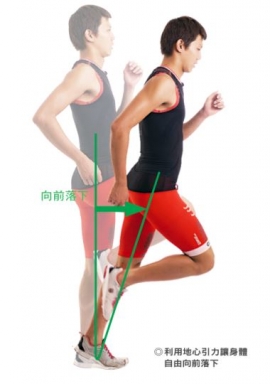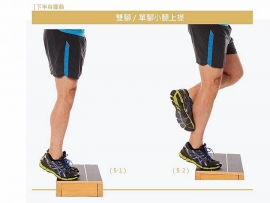书上第82页有提到深蹲的观念,其中谈到“Squat Stance (深蹲的步距)”,其原文如下:
If you are trying to break 1200 pounds for the squat, a wide stance is the ticket. It will allow you to keep your torso upright and squat the equivalent of a Volkswagen. But if you’re using the squat as an exercise to improve health and athletic performance, you need a stance that expresses a full range-of-motion, reveals problem, and transfer to other athletic movements.
(译:在进行深蹲时,若你的训练是要不断挑战重量极限,宽步距可以让你保持躯干的直立、更加的稳固。而若你是要透过深蹲训练来改善健康及运动表现,适合的步距可以挑战更大的活动范围、曝露身体的问题缺失并且将训练的效益移转到运动的动作表现。)
For most people, positioning their feet just outside the shoulders will accomplish that goal. This all-purpose squat stance has universality in sports – think of the ready position of linebacker, a tennis player, or a fighter’s combat stance.
(译:对于大部份的人来说,他们足部的距离是在肩膀的外侧,这种通用型的步距(All-purpose squat stance)在运动是十分常见,像是美式足球线卫、网球选手、格斗选手的准备姿势。)
From this same position you can tackle more advanced exercise – the front squat, overhead squat, and Olympic lifts – without having to adjust your feet. Remember the Miyamoto Musashi quote that I referenced in the introduction to this book: “Make your fight stance your everyday stance, make your everyday stance your fight stance."
(译:在通用型的步距姿势,可以在进行更多进阶的动作下(Front Squat、Overhead Squat或是奥运匹克挺举),不用调整脚步的距离。宫本 武蔵说过一句话“Make your fight stance your everyday stance, make your everyday stance your fight stance.”。)
Establish a squat stance that best fits your goal as an athlete and allows you to practice good form. Personally, I mostly use an all-purpose stance, but on occasion experiment with a wide stance to throttle the stimulus.
(译:对于运动员来说,建立一个符合运动内容的步距,并在良好的姿势下进行练习。就个人而言,我大多使用通用型的步距,但有时候为了提高训练的负荷,会採取宽步距。)
最终,还是要取决于你目的性及安排,有的人训练是为了运动表现要更好;有的人是挑战个人负重的记录。先将前后的文章看完,然后跟教练讨论、用身体去感觉实际的差别啰。
文章来源:山姆伯伯工作坊



